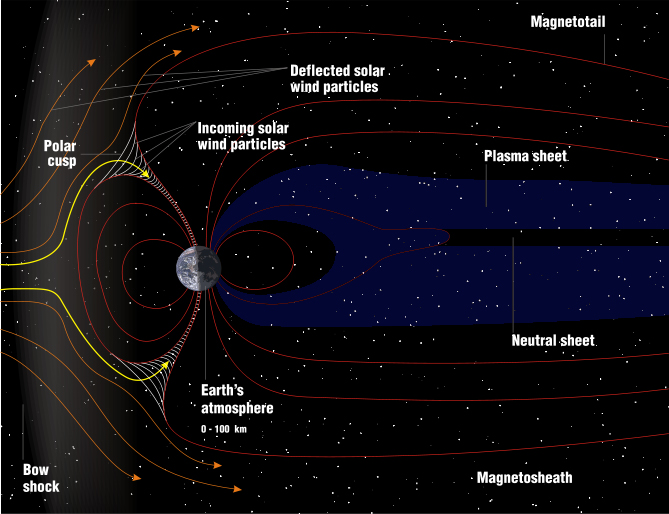University of Rochester geophysicist John Tarduno and an international team measured the magnetization of nanometer-sized magnetic inclusions, isolated within millimeter-sized quartz crystal inclusions, within 3.5 billion year old South African igneous rocks called dacites using a new, super-sensitive superconducting quantum interface device, or SQUID magnetometer.
According to their measurements and calculations, Earth's magnetic field 3.5 billion years ago was only half as strong as it is today, and the magnetopause was only half the distance from Earth it is today.

Image: The structure of Earth's magnetosphere, the area of space around the Earth that is controlled by its magnetic field, by Image Editor on Flickr.com, based upon a NASA image
"On a normal night 3.5 billion years ago you'd probably see the aurora as far south as New York," explained Tarduno.
This study, supported by the National Science Foundation and the John Simon Guggenheim Foundation, brought together scientists from the University of KwaZulu-Natal (South Africa), the University of Rochester (New York), NASA, the Chinese Academy of Geological Sciences (Beijing) and the University of Oslo (Norway).





Comments